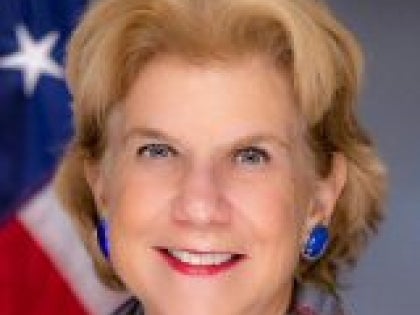
How should NY dole out billions in school aid? Report suggests changes in outdated scheme
How New York spreads billions of dollars in aid among 673 public school districts each year is about to come under intense scrutiny for the first time in nearly two decades.
A giant report released Monday offers plenty to debate. A research group hired by the state to study the complicated formula it has used since 2007 to distribute school funds came back with 226 pages of analysis and suggested changes — a thick pile of material for Gov. Kathy Hochul and lawmakers to study as they prepare to take up the next state budget.
What they do in response is sure to be a focus of the yearly legislative session that starts in January. Lawmakers fought off Hochul's proposed aid cuts for half the state's districts last year, and will likely resist any steps this year that would reduce funding — while embracing those that hike aid or replace outdated criteria.
Hochul and the legislature commissioned the study by the Albany-based Rockefeller Institute of Government as part of the state budget enacted in April this year. Facing a Dec. 1 deadline, the Rockefeller Institute held five public hearings around New York in July and August and raced to complete its work in less than seven months.
Its report gives the state a "menu of options" to weigh, some for immediate adoption and others that could be phased in over several years to soften the impact, Robert Megna, the Rockefeller Institute's president, wrote in a preface. The overriding goal, he said, was to fix various parts of the formula while "giving school administrators the reliability and predictability they need."

Impact on New York school districts unclear for now
How those changes would affect New York's overall spending or aid for any particular district won't be known until a specific set of proposals are made, likely by Hochul in the budget plan she lays out in January.
New York spent nearly $30,000 per student on average in 2022, the most by far of any state, according to the report. Local property taxes covered the biggest share of that expense, followed by state aid and then a small piece from the federal government. New York dispensed nearly $25 billion in "foundation aid" — the funding stream studied by the report — this year.

Reactions to the report so far are mixed
Education groups and lawmakers cheered much of what the Rockefeller Institute suggested, such as changing how the state measures poverty levels and the needs of students learning English for the first time. Both are factors in determining how much aid a district is given.
"Many of the report’s proposals align with our commitment to addressing the disparities that have long held back students from reaching their full potential," a coalition group known as the Alliance for Quality Education said in a statement on Tuesday.
State Sen. Shelley Mayer, the Yonkers lawmaker who leads the Senate Education Committee, applauded the report for its "intellectual depth" and a litany of proposals she supports. Among them: the use of a regional cost index to adjust aid for inflation, and new consideration for expanded mental health services that schools now provide.
But she was leery of its ideas to scale back the state's "save harmless" policy, which Hochul tried in vain to end last year. That longstanding policy prevents any district from getting less aid than it got the previous year, and protects those with past enrollment declines from getting funding cuts as a result of the formula. Some 337 districts did not see cuts in aid this year because of the policy.
"I'm not prepared to start a conversation that assumes a district shouldn't get what they got the year before," Mayer said in an interview Tuesday.
The New York State School Boards Association, while largely positive about the report, also took issue with phasing out "save harmless" and ending an option for rich districts that otherwise would get little aid. The latter policy enabled 45 districts this year to claim a flat rate for aid of $500 per pupil — for a total of $41 million.
"This is a very detailed, thoughtful and thorough report," Brian Fessler, director of governmental relations for the school boards association, said in an interview on Tuesday.
More detailed than expected for a seven-month study, the report suggested many of the same formula improvements that groups like his have long sought, Fessler said. But he argued its "save harmless" proposals would remove a safety net that protects districts from the formula's flaws — and could mean aid cuts for many, depending on what other changes the state makes.
What happened with foundation aid last year?
In her budget plan for this year, Hochul proposed hiking total foundation aid by $507 million, or 2.1%, but much of that increase was for New York City. About half the state's school systems would have gotten cuts by eliminating "save harmless."
That prospect set off ripples of protest across the state. In the Westchester County city of Mount Vernon, school leaders and elected officials rallied against a potentially "devastating" loss of $2.9 million in state support.
State lawmakers countered with proposals to cancel the cuts and replace them with minimum aid increases of 3% for every district. In the end, both sides gave: the final budget dropped both the cuts and the 3% minimum increases, raised total foundation aid by $935 million, and funded the study that the Rockefeller Institute just completed.



